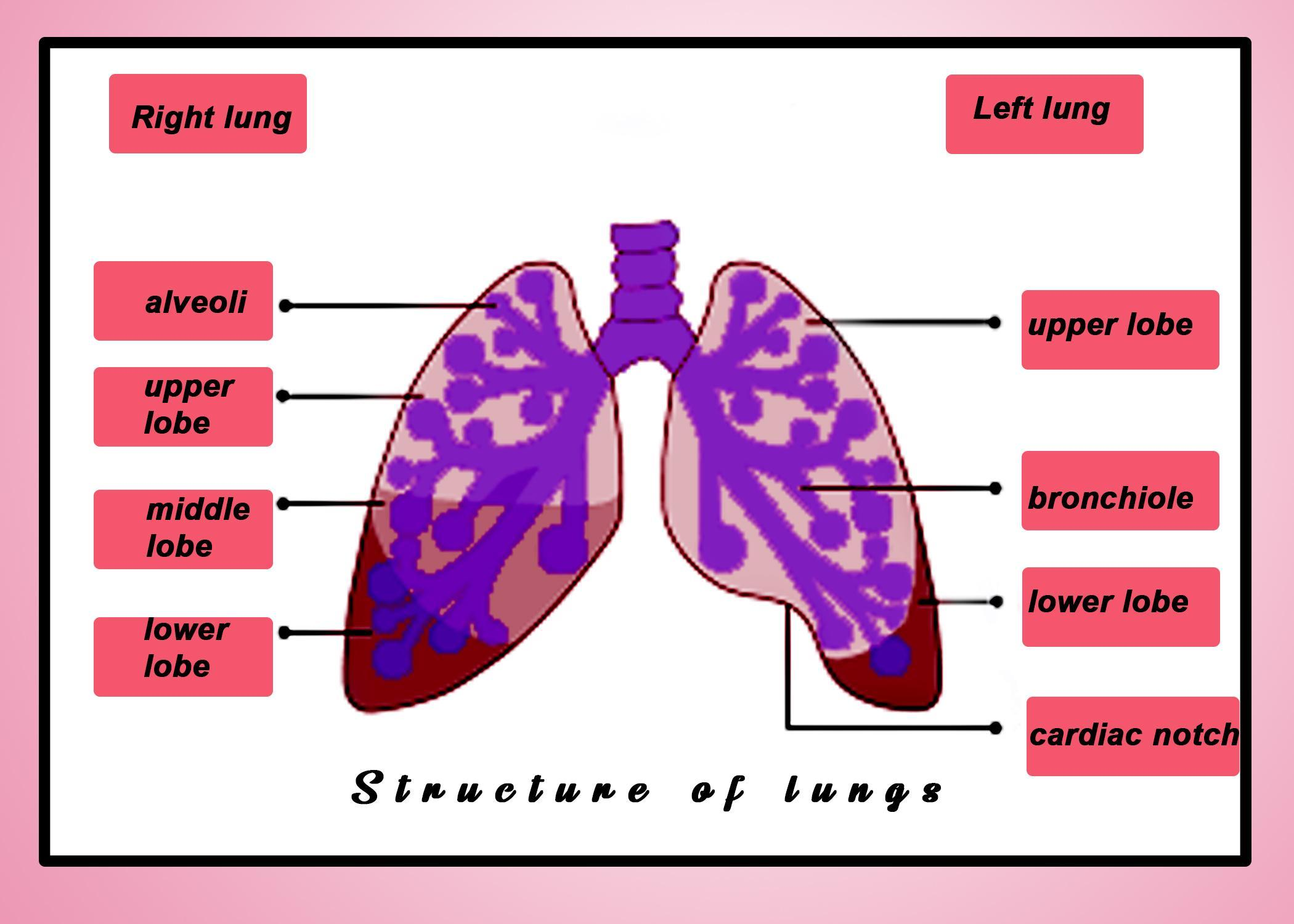
Are both lungs similar in size?
Answer
567k+ views
Hint: The heart of a human is as equal in size as of their fist. There isn’t enough room for the heart in the center of the chest because our sternum is present there. The heart requires a lot of space not just to stand there but also to pump.
Complete step by step answer:
Your lungs are in your chest, and they're so big they take up most of the room in your chest. You've got two lungs, but they're not the same size as your nostrils or eyes. Instead, the lung on your body's left side is a bit smaller than the lung on your right side. On the left, this extra space leaves room for your heart. The left lung with 2 lobes is slightly smaller, while the right lung with 3 lobes is bigger.
Additional information: Your rib cage, which is composed of 12 sets of ribs, protects your lungs. These ribs are attached to your spine in your back and go around your lungs to keep them healthy. Beneath the lungs is the diaphragm (say: DY-uh-fram), a dome-shaped muscle that works with your lungs to allow you to inhale (breathe in) and exhale (breath out) air.

You can't see your lungs, but feeling them in action is easy: put your hands on your chest and take a very deep breath. You're going to feel your chest get slightly larger. Breathe the air out now, and feel the chest back to its normal size. You just felt the strength of your lungs.
Note: The primary feature of the lungs is the gas exchange mechanism called respiration (or breathing). Oxygen from the incoming air reaches the blood during respiration, and carbon dioxide, waste gas from oxidation, exits the blood.
Complete step by step answer:
Your lungs are in your chest, and they're so big they take up most of the room in your chest. You've got two lungs, but they're not the same size as your nostrils or eyes. Instead, the lung on your body's left side is a bit smaller than the lung on your right side. On the left, this extra space leaves room for your heart. The left lung with 2 lobes is slightly smaller, while the right lung with 3 lobes is bigger.
Additional information: Your rib cage, which is composed of 12 sets of ribs, protects your lungs. These ribs are attached to your spine in your back and go around your lungs to keep them healthy. Beneath the lungs is the diaphragm (say: DY-uh-fram), a dome-shaped muscle that works with your lungs to allow you to inhale (breathe in) and exhale (breath out) air.

You can't see your lungs, but feeling them in action is easy: put your hands on your chest and take a very deep breath. You're going to feel your chest get slightly larger. Breathe the air out now, and feel the chest back to its normal size. You just felt the strength of your lungs.
Note: The primary feature of the lungs is the gas exchange mechanism called respiration (or breathing). Oxygen from the incoming air reaches the blood during respiration, and carbon dioxide, waste gas from oxidation, exits the blood.
Recently Updated Pages
Why are manures considered better than fertilizers class 11 biology CBSE

Find the coordinates of the midpoint of the line segment class 11 maths CBSE

Distinguish between static friction limiting friction class 11 physics CBSE

The Chairman of the constituent Assembly was A Jawaharlal class 11 social science CBSE

The first National Commission on Labour NCL submitted class 11 social science CBSE

Number of all subshell of n + l 7 is A 4 B 5 C 6 D class 11 chemistry CBSE

Trending doubts
Differentiate between an exothermic and an endothermic class 11 chemistry CBSE

10 examples of friction in our daily life

One Metric ton is equal to kg A 10000 B 1000 C 100 class 11 physics CBSE

Difference Between Prokaryotic Cells and Eukaryotic Cells

State the laws of reflection of light

Explain zero factorial class 11 maths CBSE




